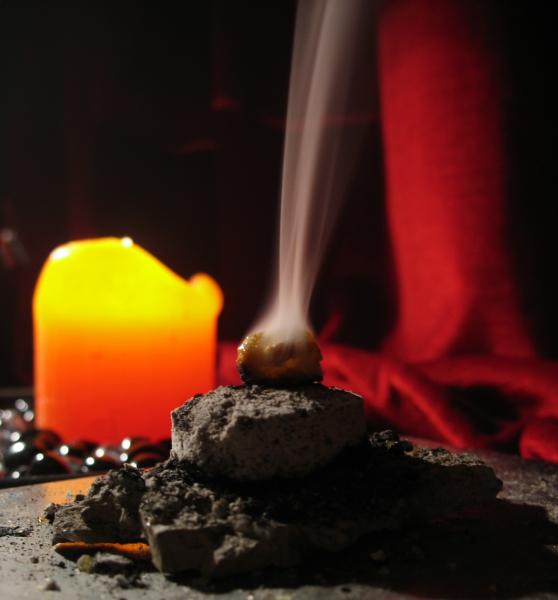Frankincense
Matthew 2:11
And when they were come into the house, they saw the young child with Mary his mother, and fell down, and worshipped him: and when they had opened their treasures, they presented unto him gifts; gold, and frankincense, and myrrh.
As a child, I was told that frankincense had been brought to Europe by the Frankish people – ancestors of the modern French. This turned out not to be the case. Instead, the prefix frank  refers to this incense being of particular high quality or purity.
refers to this incense being of particular high quality or purity.
Frankincense is a resin produced by trees of the boswellia genus. Incisions are made into the bark, and a milky liquid appears. This liquid hardens with exposure to the air and becomes the aromatic resin with which we are familiar.
Frankincense is mentioned frequently in the Pentateuch as one of the important incenses used in Tabernacle, and later Temple, worship. In Exodus 30:34, God gave Moses a recipe for the incense to be burned on the incense altar.
Take sweet spices, stacte, and onycha, and galbanum, sweet spices with pure frankincense (of each shall there be an equal part)
Incense was frequently used in conjunction with sacrifices. For example, in Leviticus 2, we read:
He shall take from it [the sacrifice] a handful of the fine flour and oil, with all of its frankincense, and the priest shall burn this as its memorial portion on the altar, a food offering with a pleasing aroma to the LORD. (Leviticus 2:2)
It appears that incense was symbolic of prayers going up to the Lord. Therefore, our prayers are like a pleasing aroma to the Lord. That is one reason why frankincense was such a fitting gift for the Wise Men to bring to the child Jesus.
Prayer: May our prayers, Lord God, be as a pleasing aroma to You. Amen.
Author: Paul F. Taylor
Ref: Encyclopædia Britannica, , accessed 7/28/2017. Image: License: Creative Commons Attribution-Share Alike 2.5 Generic.